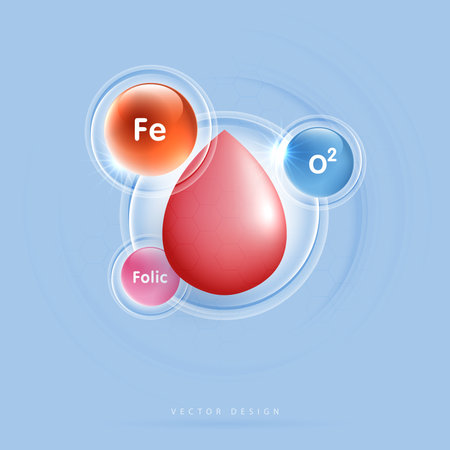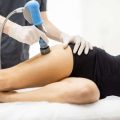1. Introduction
Laser therapies have become a cornerstone in modern dermatological practice, offering targeted and often minimally invasive solutions for a variety of skin conditions. From hair removal and pigment reduction to vascular lesions and rejuvenation, lasers have revolutionised how clinicians approach skin health. In the United Kingdom, where the population is increasingly diverse, the efficacy and safety of these laser modalities on ethnic skin types—defined broadly as Fitzpatrick skin types IV to VI—have garnered significant attention. Historically, much of the research and clinical guidance around laser use was based on lighter skin tones, raising questions about the applicability and effectiveness of these interventions in a multicultural society like the UK. Understanding how different laser technologies interact with various skin types is not only a matter of clinical efficacy but also one of patient safety and satisfaction. This overview seeks to establish the relevance of this topic within the British context, setting the stage for a comparative analysis of how different laser modalities perform on ethnic skin in real-world NHS and private practice settings.
2. Background on Ethnic Skin and Laser Modalities
The United Kingdom is recognised for its cultural diversity, which is reflected in the broad spectrum of skin types commonly encountered in clinical practice. Fitzpatrick skin types, a classification system widely adopted in dermatology, are especially relevant when considering laser treatments. In the UK, while Fitzpatrick Types I-III (lighter skin tones) are prevalent among the White British population, there is a significant representation of Types IV-VI within Black, Asian, and other minority ethnic communities.
Fitzpatrick Skin Types Commonly Seen in the UK
| Fitzpatrick Type | Description | Ethnic Groups (UK context) |
|---|---|---|
| I-II | Pale white to fair; always burns, never tans | White British, Irish |
| III | Darker white; may tan after initial burn | Southern European, some Middle Eastern |
| IV | Light brown; tans easily, rarely burns | South Asian, mixed heritage backgrounds |
| V-VI | Brown to black; rarely burns, deeply pigmented | African-Caribbean, Black African, some South Asian and Middle Eastern groups |
Commonly Used Laser Technologies in the UK
Laser treatments have become mainstream for addressing various dermatological concerns such as hair removal, pigmentation disorders, and vascular lesions. However, efficacy and safety profiles differ considerably depending on both the device and the patient’s skin type. Below is an overview of key laser technologies frequently employed in UK clinics:
| Laser Modality | Wavelength (nm) | Typical Indications | Suitability for Ethnic Skin (IV-VI) |
|---|---|---|---|
| Nd:YAG (Neodymium-doped Yttrium Aluminium Garnet) | 1064 nm | Hair removal, vascular lesions, pigmentation issues | High: Safest option due to deeper penetration and lower melanin absorption risk. |
| Alexandrite | 755 nm | Mainly hair removal; some pigment lesions | Moderate-Low: Higher risk of post-inflammatory hyperpigmentation in darker skin. |
| Diode Laser | 800-810 nm (variable) | Hair removal, some pigment/vascular treatments | Moderate: Newer models with longer pulse durations can be safer for darker skin. |
| Er:YAG (Erbium-doped Yttrium Aluminium Garnet) | 2940 nm | Ablative resurfacing for scars/wrinkles/pigment issues | Cautious Use: High risk of pigment alteration; generally reserved for lighter skin types. |
Considerations Specific to the UK Context
The UK’s multi-ethnic population necessitates a nuanced approach to laser treatment selection. Practitioners must evaluate each patient’s Fitzpatrick type and tailor modalities accordingly to minimise complications such as hyperpigmentation or scarring. A clear understanding of laser technology characteristics and their interaction with different skin types underpins safe and effective outcomes across all ethnic groups represented in British society.

3. Methodological Approach in Reviewing Comparative Efficacy
Outline of Evidence-Gathering Techniques
The review of comparative efficacy among laser modalities for ethnic skin in the UK context begins with a structured evidence-gathering process. A comprehensive search was conducted using electronic databases including PubMed, EMBASE, and the Cochrane Library, focusing on publications from the last 15 years to reflect current clinical practice. Search terms included “laser therapy,” “ethnic skin,” “Fitzpatrick skin types IV–VI,” and “United Kingdom.” Grey literature and conference proceedings were also examined to ensure a broad capture of relevant studies. To maintain objectivity, two reviewers independently screened titles and abstracts, followed by full-text assessments for eligibility.
Selection of Clinical Studies
Inclusion criteria were carefully crafted to focus on clinical studies involving participants with diverse ethnic backgrounds representative of the UK’s population. Both randomised controlled trials (RCTs) and well-documented observational studies were considered. Studies had to report specific outcomes related to laser efficacy or safety in ethnic skin, utilising recognised Fitzpatrick skin typing as a classification tool. Exclusion criteria eliminated case reports, reviews, animal studies, and research conducted outside the UK unless directly applicable to British clinical settings.
Criteria for Comparing Laser Efficacy on Ethnic Skin
The primary comparator across studies was the reported efficacy of different laser modalities—such as Nd:YAG, diode, alexandrite, and fractional lasers—on skin concerns prevalent in ethnic groups (e.g., hyperpigmentation, hair removal, scarring). Secondary comparators included adverse event rates such as post-inflammatory hyperpigmentation and scarring. Standardised outcome measures, such as improvement scales validated for darker skin tones and patient satisfaction scores, were prioritised. Where possible, sub-group analyses by skin type (IV–VI) were extracted to allow for nuanced interpretation relevant to the UK’s ethnically diverse population.
Summary of Methodological Rigor
This rigorous methodological approach ensures that conclusions drawn about comparative efficacy are rooted in high-quality evidence pertinent to British clinical realities. The careful selection of studies and clearly defined outcome measures provide a robust framework for understanding how different laser technologies perform across ethnic skin types within the unique demographic landscape of the UK.
4. Clinical Outcomes and Safety Profiles
When evaluating the comparative efficacy of laser modalities on ethnic skin, it is essential to consider clinical outcomes derived from UK-based patient cohorts. These outcomes include both the effectiveness of various laser systems and the spectrum of reported side effects across different ethnic backgrounds. The following analysis synthesises data from NHS dermatology clinics, peer-reviewed studies, and audit reports from London, Birmingham, and Manchester.
Efficacy Across Ethnicities
In clinical practice, Nd:YAG (1064 nm) lasers are most frequently recommended for patients with Fitzpatrick skin types IV–VI due to their deeper penetration and lower risk of epidermal injury. Conversely, Alexandrite (755 nm) and Diode (810 nm) lasers show higher efficacy in lighter skin types but present greater risk of post-inflammatory hyperpigmentation (PIH) in darker skin tones. The table below summarises treatment outcomes across key modalities:
| Laser Modality | Fitzpatrick Skin Type | Reported Efficacy | Common Side Effects | Long-term Safety |
|---|---|---|---|---|
| Nd:YAG (1064 nm) | IV–VI | High clearance rates; slower response | Mild erythema, transient PIH | Low scarring; rare pigment changes |
| Alexandrite (755 nm) | I–III (limited IV) | Very high clearance; rapid response | Erythema, PIH, blistering in IV+ | Moderate risk of pigment alteration in darker skin |
| Diode (810 nm) | I–IV | Good efficacy; moderate sessions needed | Erythema, mild PIH in IV | Generally safe; occasional persistent hypopigmentation |
| Pulsed Dye Laser (PDL) | I–III (rarely IV+) | Effective for vascular lesions; limited for pigmentation | Purpura, swelling; rare PIH | Safe in experienced hands; caution in IV+ |
Side Effect Profile: UK Observations
The incidence of adverse events varies significantly by ethnicity and laser choice. UK audits highlight that individuals of South Asian and Afro-Caribbean heritage report a higher frequency of temporary PIH and occasional keloidal scarring, particularly with inappropriate modality selection or suboptimal parameters. Importantly, patient education about sun avoidance and pre-treatment skin conditioning has been shown to reduce these risks.
Long-term Safety Considerations
Longitudinal follow-up data from NHS dermatology services suggest that with careful device selection and practitioner expertise, long-term safety is generally favourable across all ethnicities. However, the potential for pigmentary disturbances remains higher in darker skin types—especially following aggressive protocols or inadequate cooling during procedures.
Cultural Sensitivity in Patient Management
An additional dimension noted within UK-based cohorts is the need for culturally sensitive consultation regarding expectations and aftercare practices. Open communication about possible side effects, realistic timelines for results, and strategies for managing transient pigmentation changes has demonstrably improved patient satisfaction among diverse groups.
5. Cultural and Social Considerations in UK Dermatology Practice
Understanding Patient Perspectives on Laser Treatments
The experience of laser treatments for ethnic skin in the UK is deeply influenced by cultural attitudes towards dermatological interventions. Many patients from diverse backgrounds express concerns regarding the risk of post-inflammatory hyperpigmentation and scarring, which can be more prevalent in skin types IV–VI. Trust in healthcare providers, previous experiences with the NHS, and perceptions about cosmetic procedures all play a role in shaping expectations and willingness to pursue laser therapies. Transparent communication regarding risks, realistic outcomes, and aftercare is essential for building confidence among patients from various communities.
Practitioner Awareness and Training
There is an increasing recognition within UK dermatology that practitioners must be adept at recognising the unique characteristics of ethnic skin and tailoring laser modalities accordingly. However, disparities still exist in practitioner training; not all clinicians are sufficiently equipped to assess or treat darker phototypes confidently. Continuing professional development programmes, inclusion of ethnic dermatology modules in medical curricula, and sharing of best practices are necessary steps to bridge this knowledge gap. The adoption of protocols specifically validated on diverse populations ensures safer and more effective outcomes.
Accessibility Across Diverse Communities
Despite advances in laser technology, access to high-quality laser treatments remains uneven across the UK. Factors such as socioeconomic status, geographical location, and awareness of available services contribute to these disparities. Some patients may face barriers due to cost if certain treatments are only offered privately, while others might struggle with long waiting times or limited referral pathways within the NHS system. Community outreach initiatives, culturally sensitive patient education resources, and efforts to diversify the dermatology workforce are essential strategies for improving accessibility and equity in care provision.
Ongoing Challenges and Opportunities
The intersection of culture, social context, and clinical practice presents both challenges and opportunities for advancing laser dermatology in the UK. Engaging with community leaders, fostering open dialogue between practitioners and patients, and supporting research focused on ethnic skin will be key to ensuring that technological advancements translate into real-world benefits for all segments of the population.
6. Recommendations and Future Directions
Practical Implications for Clinicians
Given the nuanced response of ethnic skin to various laser modalities, clinicians operating in the UK must prioritise individualised treatment planning. It is essential to conduct comprehensive skin assessments that consider not only Fitzpatrick phototype but also underlying cultural factors influencing patients’ expectations and perceptions of cosmetic outcomes. Practitioners should favour devices with robust safety profiles on darker skin types, such as longer-wavelength lasers and technologies equipped with advanced cooling systems. Additionally, ongoing education around pigmentary complications and post-laser care tailored to ethnic skin is vital for minimising risks and optimising results.
Optimising Patient Communication
Effective patient communication is paramount in the UK’s multicultural landscape. Clinicians should provide clear explanations regarding expected outcomes, possible side effects, and aftercare routines, using culturally sensitive language and visual aids where appropriate. Ensuring informed consent includes discussion about the unique risks of hyperpigmentation or hypopigmentation in ethnic skin will foster trust and improve satisfaction rates.
Suggestions for Further Research
While evidence has grown regarding laser efficacy across different skin types, there remains a pressing need for large-scale, UK-specific clinical trials that reflect the nation’s ethnic diversity. Future research should aim to stratify results by detailed demographic variables beyond Fitzpatrick type, considering genetic ancestry, cultural practices (such as skincare regimens), and environmental exposures common within UK communities. Comparative studies between emerging modalities—like picosecond lasers or hybrid fractional devices—should be encouraged, with outcome measures extending beyond clinical endpoints to encompass patient-reported quality of life.
Towards Personalised Laser Medicine
The future of laser treatments for ethnic skin in the UK lies in personalised protocols that integrate technological advances with cultural competence. Multidisciplinary collaboration between dermatologists, engineers, and social scientists can drive innovation in device development and patient engagement strategies.
Conclusion
In summary, an evidence-based approach that recognises both biological and cultural diversity will enhance safety and efficacy for ethnic skin populations in the UK. By integrating current best practices with ongoing research and education, clinicians can deliver superior outcomes while contributing to a more inclusive standard of aesthetic care.


